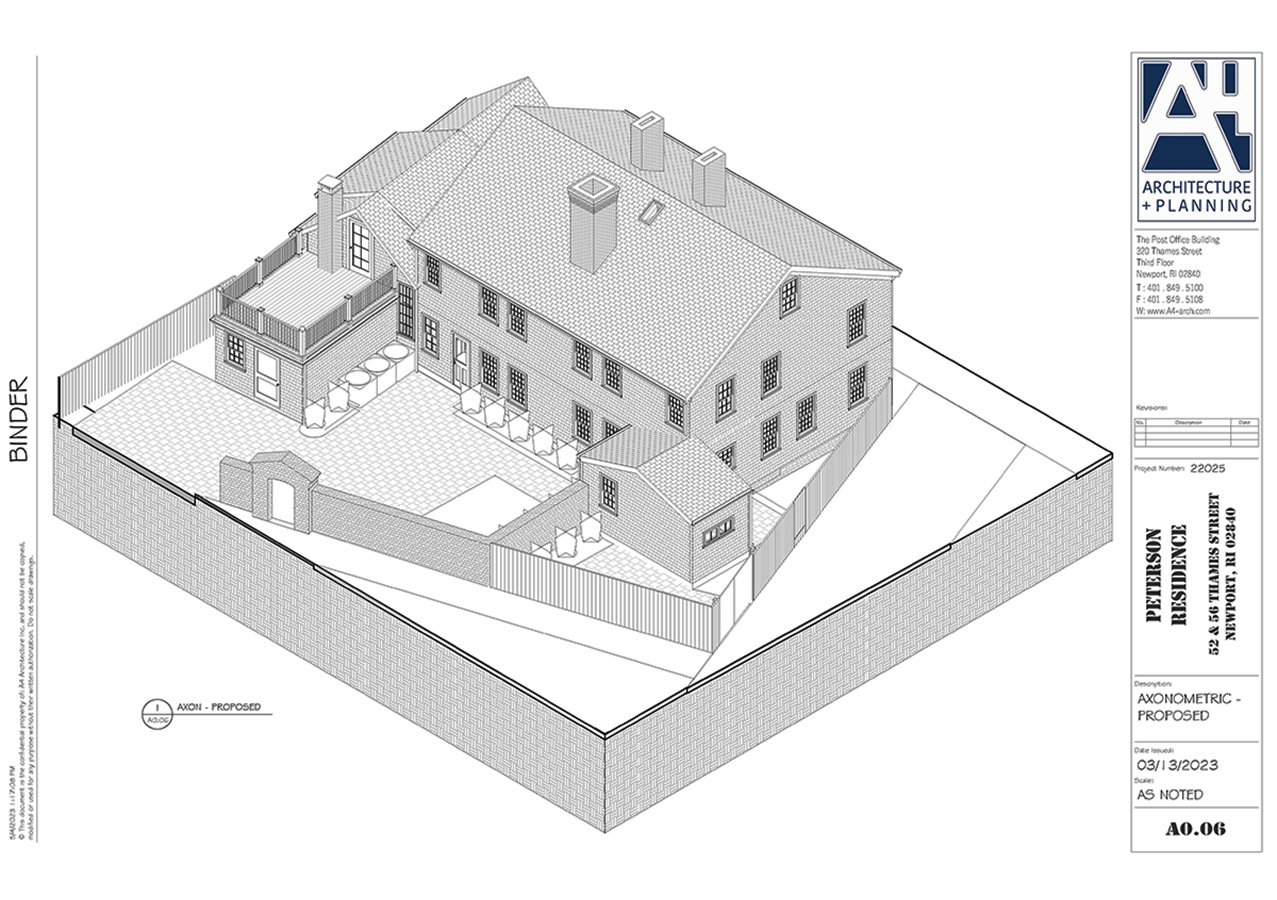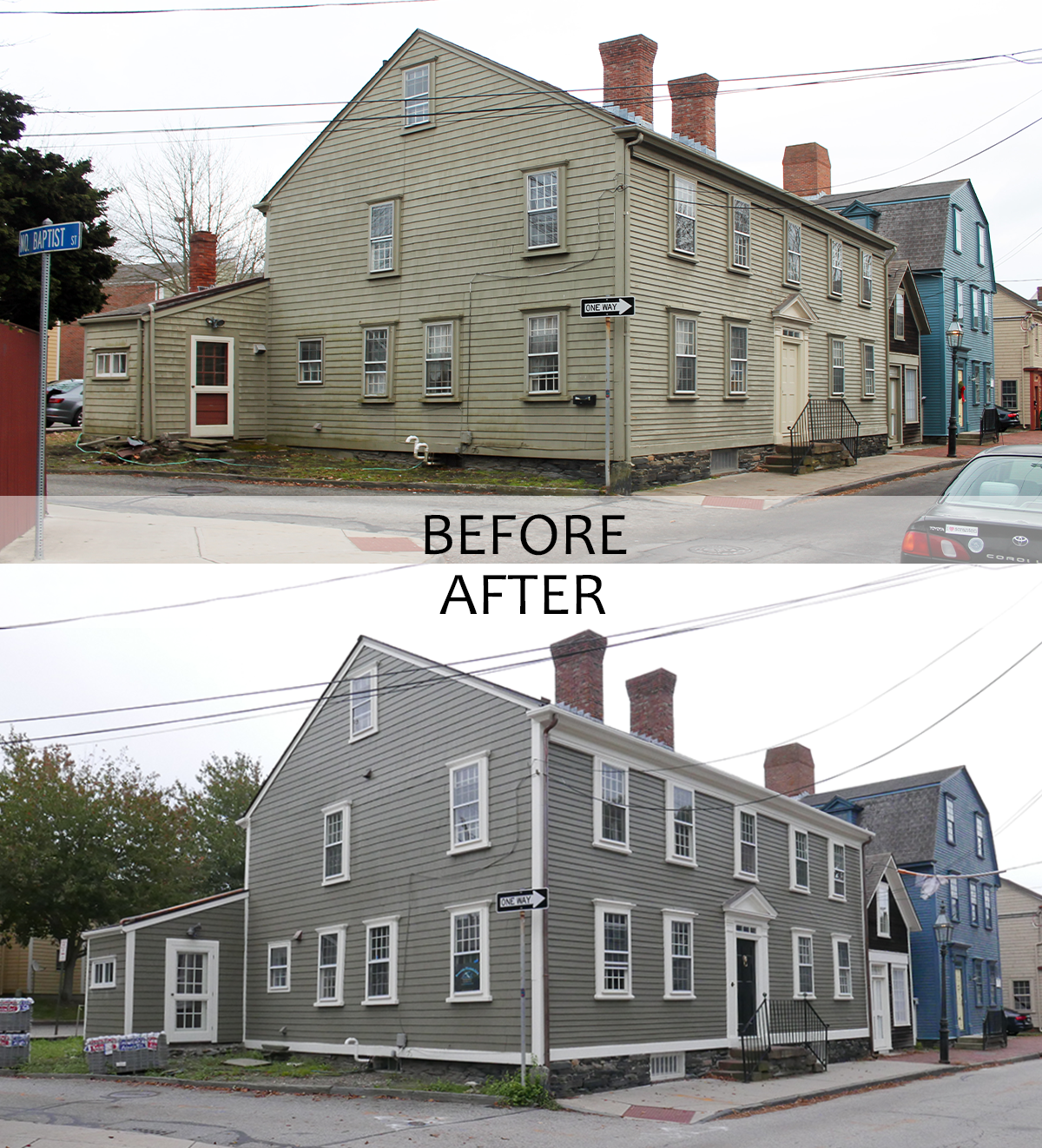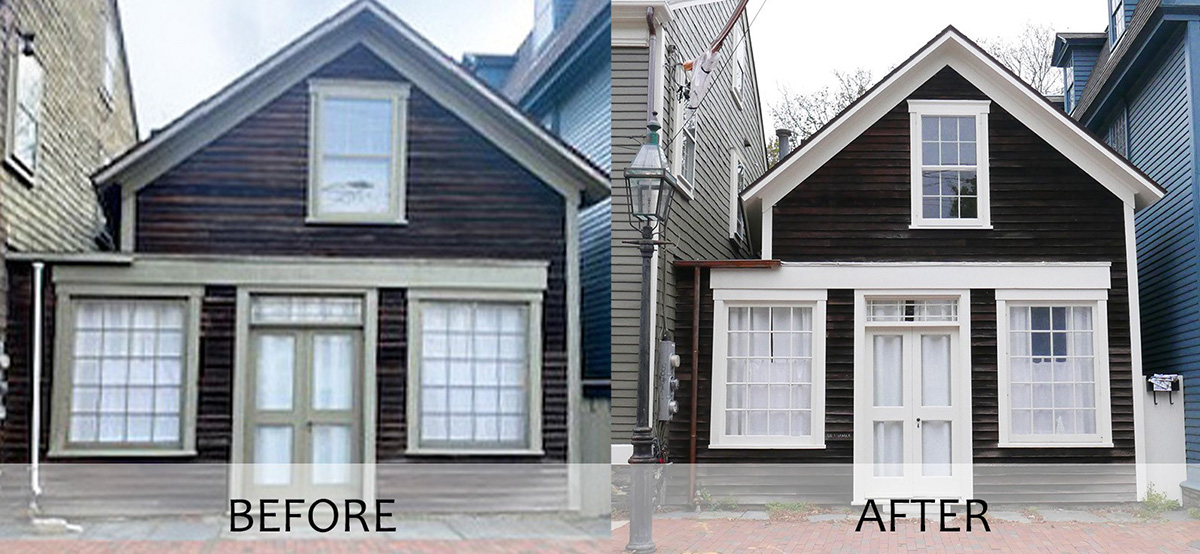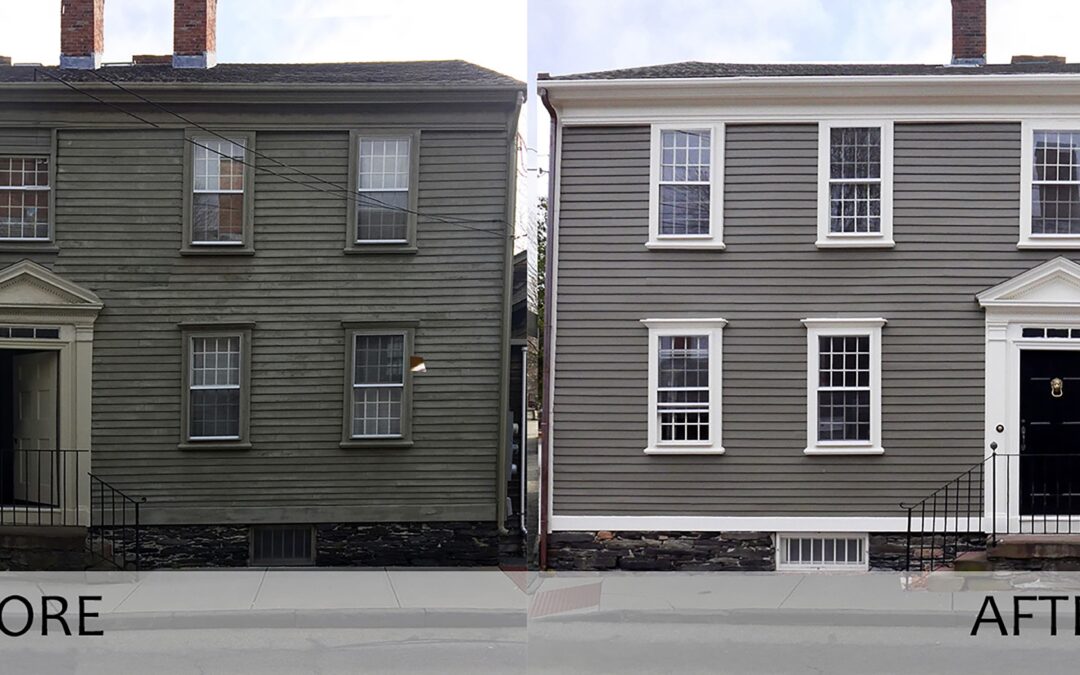52 Thames Street Exterior Before & After
Newport, Rhode Island, is a city with a rich history dating back to its founding in 1639. It is home to some of the finest examples of Colonial Era architecture in the United States. However, many of historic houses have been lost over the years to demolition, neglect, and natural disasters. How were some houses preserved and others lost? It is a story that involves many twists and turns.
The first Colonial Era houses in Newport were built by English settlers in the early 1600s. These homes were typically small, simple, and functional. Over time, however, as the community thrived in its well-protected harbor just off the Atlantic Ocean, some of the more prosperous settlers built larger and more elaborate homes. These homes tended to be more long-lasting. The oldest surviving Colonial Era house in Newport is currently believed to be the Wanton-Lyman-Hazard House, which was built in 1675.

West Elevation Drawing of Existing Building
Newport’s maritime prosperity in the 18th century led to a boom in construction, and many new Colonial Era houses were built during this time. These homes were often larger and more ornate than the earlier houses, and they reflected the wealth and status of their owners. Some of the most notable Colonial Era structures in Newport include the Old Colony House (1739), the Hunter House (1748), the White Horse Tavern (1750), and the Brick Market (1762).
The American Revolution had a significant impact on Newport. The city was occupied by British troops for several years, and many homes were damaged or destroyed during the war. After the war, Newport’s maritime trade declined, and the city experienced a period of economic hardship. As a result, many Colonial Era houses were abandoned or neglected.

Proposed Axonometric of Building.
However, in the late 19th century, Newport began to attract wealthy tourists and summer residents. These new visitors were drawn to the city’s beautiful scenery and its historic homes. Many of the Colonial Era houses were restored and renovated during this time.
In the early 20th century, Newport became known as the “Summer Capital of the Gilded Age.” The city’s wealthy residents built lavish mansions, which came to be known as the “Newport Mansions.” The construction of these mansions led to the demolition of some Colonial Era houses. However, many other Colonial Era houses were preserved and restored during this time as the economic tide of the “City by the Sea” rose again.

52 Thames Street Exterior Before & After
In the mid-20th century, Newport again experienced a decline in tourism. As a result, many Colonial Era houses were once again neglected. In the 1970s, the construction of America’s Cup Boulevard led to the destruction of many noteworthy and beautiful Colonial Era structures. However, the presence and wealth of Doris Duke was a countervailing force and the Newport Preservation Foundation (which she funded) bought, restored, and rented more than 70 Colonial homes. That effort helped bring a renewed interest in historic preservation to Newport, and many hundreds of Colonial Era houses were restored and saved from demolition.
Today, Newport is home to over 300 surviving Colonial Era houses. These houses are a testament to the city’s rich history and its unique architecture. Many of these houses are open to the public, and visitors can learn about the city’s past and see how people lived in the Colonial Era. Others, like 52 & 56 Thames Street (built 1740) have been bought by preservation-minded property owners who want to restore these old structures by making them economically viable. A4 Architecture has been pleased to help such owners undertake these challenging and expensive renovations.

56 Thames Street Exterior Before & After
Despite the efforts of preservationists, some Colonial Era houses have been lost in recent years. If these structures are not made economically functional, they often suffer neglect and slow deterioration, until they are too far lost to be preserved. The destruction of Colonial Era houses is a loss for the community and for the nation. These houses are a valuable part of our cultural heritage, and they provide us with a glimpse into the past. It is important to preserve these historic homes for future generations to enjoy, and the best way to do that is to make them economically viable. Often people who fight the update of these houses believe that they are preserving them but are, in fact, leading to their long-term demise. At A4 Architecture we are pleased to bring our knowledge, skill, and experience to the task of updating these structures so that they meet current insulation and building codes so that they can be used for hopefully many centuries to come.
Interested in Newport Architectural History and programing? Please feel free to join the Newport Architectural Forum to stay up-to-date with architectural news from Rhode Island and abroad.
Looking to design or remodel your building to its fullest potential? We can help so let’s discuss your ideas.
Ross Sinclair Cann (AIA, LEED AP) is an historian, educator, author, and practicing architect living and working in Newport for A4 Architecture. He is the founding Chairman of the Newport Architectural Forum and holds honors degrees in Architectural History and Design from Yale, Cambridge, and Columbia Universities.
